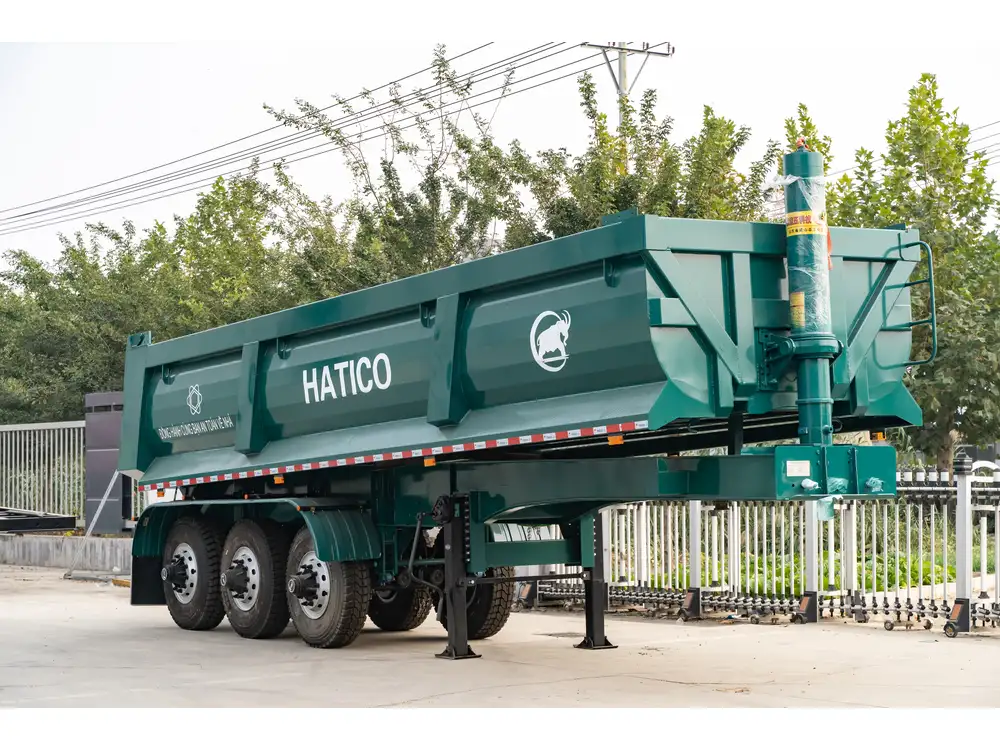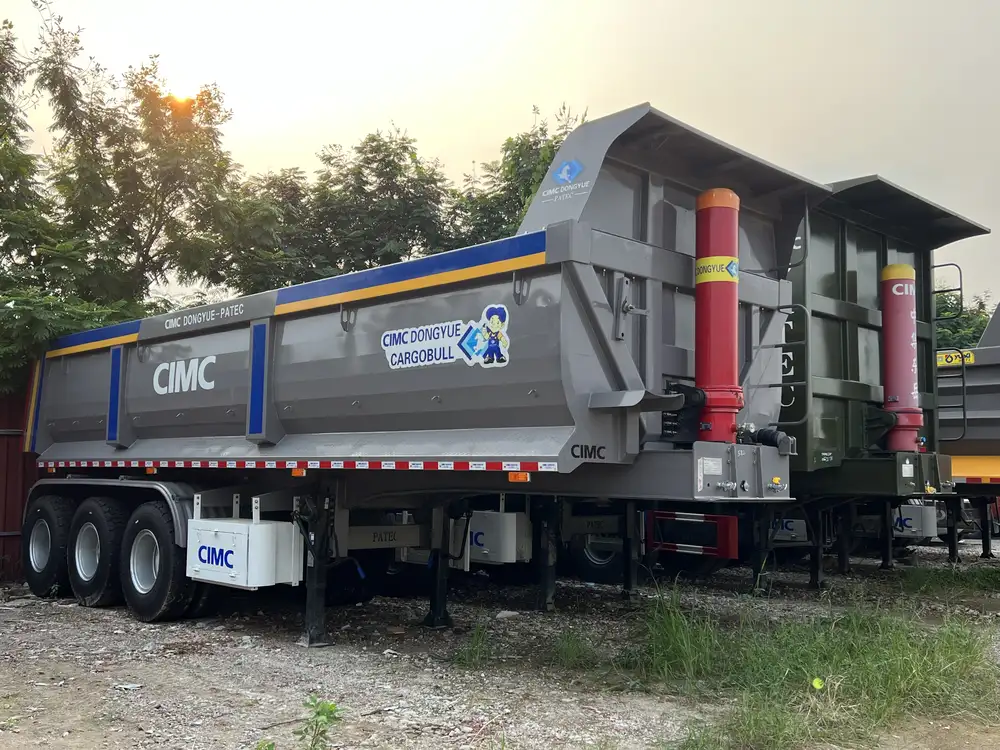Operating a dump trailer on an incline is a task that requires careful consideration and adherence to safety standards. Dump trailers are incredibly versatile and are used across various industries, including construction, landscaping, and waste management. However, when maneuvered on inclines, the risks involved can increase significantly. In this article, we aim to provide detailed guidelines and best practices for safely operating dump trailers on slopes, helping mitigate risks and enhance operational efficiency.
Understanding the Risks of Operating a Dump Trailer on an Incline
Reduced Stability and Increased Risk of Tipping
Operating a dump trailer on an incline introduces various inherent risks, most notably reduced stability. The center of gravity shifts significantly when the trailer is loaded on a slope. This shift can lead to a higher likelihood of tipping over, especially if the load is unevenly distributed. Factors contributing to this risk include:
- Load Distribution: Unevenly loaded trailers can shift their center of gravity, destabilizing the vehicle.
- Trailer Design: The height and weight of the trailer can influence its stability.
- Slope Gradient: Steeper grades present greater challenges to control the trailer.

Increased Braking Distances
When descending an inclined surface, the momentum can increase dramatically. This requires extended braking distances to maintain control over the trailer. Additionally, conditions such as wet or icy surfaces further complicate stopping capabilities. Users should account for:
- Weight of the Load: Heavier loads require more substantial braking force.
- Brake Specifications: The efficiency of the trailer’s braking system is paramount.
Essential Equipment and Features for Safe Operation
Trailer Specifications
Selecting the right dump trailer is critical for efficient operation, especially on inclines. Consider the following specifications when choosing a trailer:
| Specification | Description |
|---|---|
| Load Capacity | Ensure the trailer can handle the weight without compromising stability. |
| Brake System | Opt for trailers equipped with electric or hydraulic brakes for better control. |
| Tire Type | Choose tires that offer better grip and stability on slopes. All-terrain tires are advisable. |
| Frame Construction | A reinforced frame can provide additional stability when maneuvering on slopes. |

Additional Safety Equipment
Safety should always be at the forefront of trailer operation. Equip your dump trailer with the following safety features:
- Stabilizing Jacks: Use jacks to support the trailer when unloading on a slope, reducing the chance of tipping.
- Load Securing Straps: Properly secure the load using heavy-duty straps to prevent shifting during transport.
- Reflective Markings and Lights: Ensure visibility, especially in low-light conditions, by using reflective materials and maintaining working lights.
Best Practices for Safe Dump Trailer Operation on Inclines
Pre-Operational Checks
Before operating a dump trailer on an incline, conduct a thorough inspection of the trailer and towing vehicle:
- Inspect Brakes: Ensure the braking system is functioning effectively and that brake pads are in good condition.
- Assess Tire Condition: Check for adequate tread depth and tire pressure to maintain grip on the incline.
- Review Load Distribution: Confirm that the load is evenly distributed, with heavier materials positioned strategically to lower the center of gravity.

Optimal Driving Techniques
- Approach the Incline Gradually: Always approach an incline at a slow and steady pace. Sudden changes in speed can disrupt the load balance.
- Maintain Control: Keep a steady foot on the accelerator and avoid unnecessary acceleration, which can lead to loss of traction.
- Utilize Low Gears: When ascending or descending, utilize low gears to help control speed and reduce the risk of brake overheating.
Unloading Safely
Unloading on an incline is particularly risky. Follow these guidelines to minimize danger:
- Engage Stabilizing Jacks: If using jacks, set them up before unloading to stabilize the trailer.
- Unload Slowly: Dump materials gradually rather than all at once, which can destabilize the trailer.
- Monitor Load Shift: Keep an eye on the load as it is released to prevent unexpected movements.
How to Respond in Case of Emergencies
Despite taking preventative measures, emergencies can sometimes occur during dump trailer operations on inclines. Here are steps to follow:

If the Trailer Begins to Tip
- Stay Calm: Maintain composure and avoid sudden movements.
- Do Not Jump: Jumping may cause injury; instead, brace yourself and secure your footing.
- Cut Off Power: If safe, cut power to the dump mechanism to stop any further movement.
Handling Brake Failure
In the event of brake failure on an incline:
- Downshift Gears: Shift to a lower gear to slow the vehicle’s momentum.
- Use Emergency Brakes: Engage the emergency brake if applicable.
- Steer Safely: Attempt to steer to a safe area or level ground to avoid collisions or further incidents.
Legal and Regulatory Considerations
Operating heavy machinery, including dump trailers, is subject to various regulations and laws. Ensure compliance with local and federal guidelines, including:
- Weight Limitations: Adhere to weight restrictions imposed by local authorities to ensure safety and avoid fines.
- Safety Training: All operators should undergo training that covers safety, emergency procedures, and equipment operation.
- Licensing Requirements: Verify that all operators possess the required licenses and certifications to operate heavy trailers.

Commonly Asked Questions about Operating Dump Trailers on Inclines
What is the maximum incline for safely operated dump trailers?
The maximum recommended incline varies depending on the trailer’s design and load capacity. In general, most dump trailers can safely operate on inclines of up to 15 degrees; however, specific models are designed for steeper grades. Always refer to the manufacturer’s guidelines and safety documentation.
How can I ensure proper load distribution on my dump trailer?
To achieve optimal load distribution, follow these steps:
- Load heavier items first: Place heavier materials at the bottom and toward the front of the trailer.
- Distribute weight evenly: Spread the load as evenly as possible across the width and length of the trailer.
- Utilize Cross-Loading Techniques: If applicable, use cross-loading to distribute the weight more evenly across the axle.

What should drivers do if they encounter issues while unloading on an incline?
If any complications arise during unloading on an incline, operators should:
- Stop the Dumping Process: Immediately halt the unloading process if you detect instability or unusual trailer movement.
- Reassess Stability: Investigate the load and trailer positioning before attempting to continue unloading.
Conclusion
In conclusion, the safe operation of dump trailers on inclines relies on thorough preparation, understanding of risks, appropriate equipment usage, and adherence to best practices. By following these guidelines, operators can significantly reduce potential hazards while ensuring efficient and effective operations. Whether in construction, landscaping, or waste management, mastering the art of operating a dump trailer on an incline is essential to maintaining safety and productivity at the job site.



